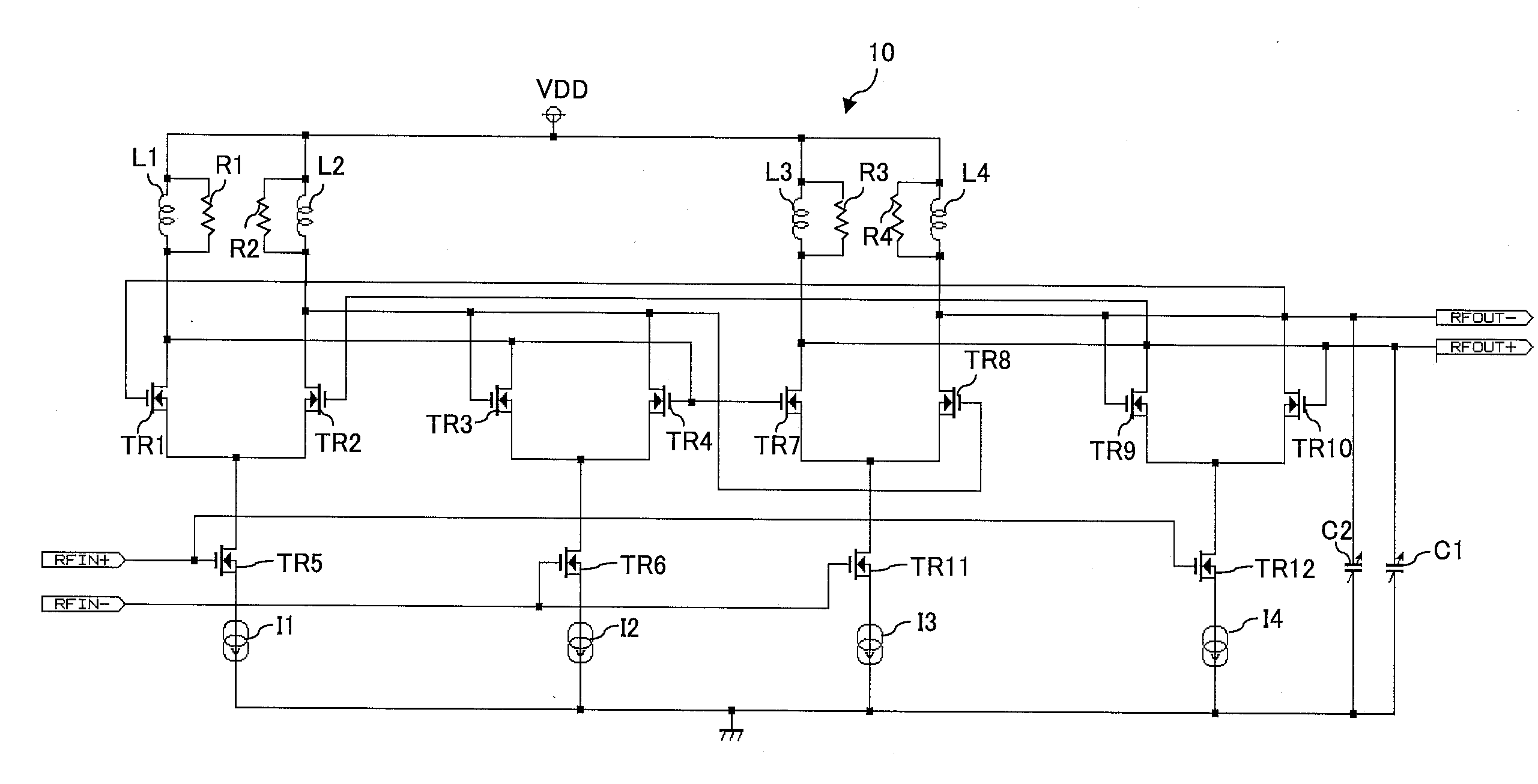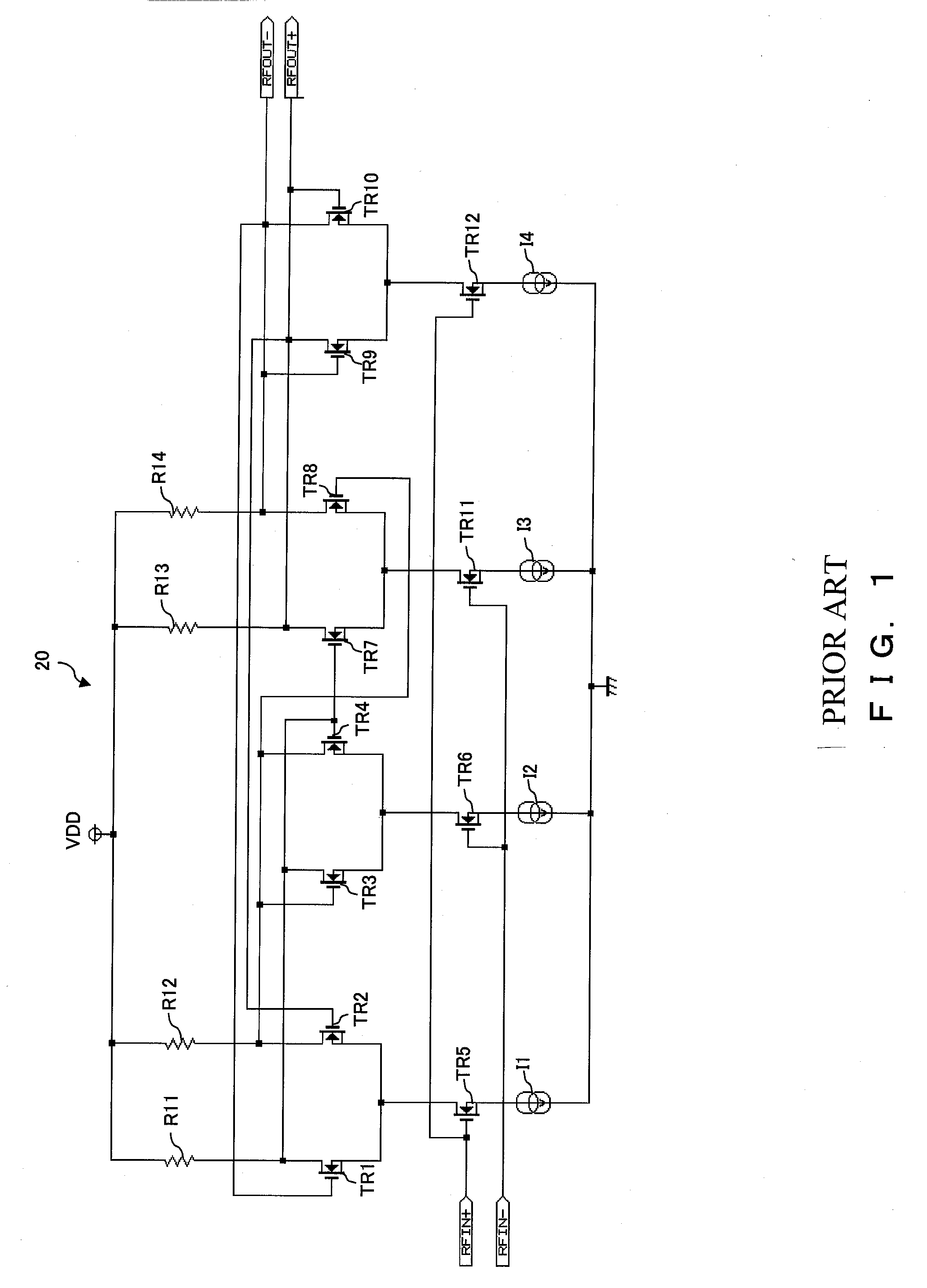Analog frequency divider
a frequency divider and analog technology, applied in the field of analog frequency dividers, can solve the problems of power consumption increase, inability to perform frequency dividing operation, and loss of amplification circuit gain in an rf frequency band, so as to achieve easy formation, increase resistance value, and extend the frequency band of the operation of the frequency divider.
- Summary
- Abstract
- Description
- Claims
- Application Information
AI Technical Summary
Benefits of technology
Problems solved by technology
Method used
Image
Examples
Embodiment Construction
[0019] The preferred embodiments are described below with reference to the drawings. FIG. 2 shows the circuit diagram of the analog frequency divider of the preferred embodiment. This analog frequency divider is formed, for example, on a semiconductor device manufactured in a MOS process.
[0020] An analog frequency divider 10 is used, for example, in an RF frequency band of 5 GHz or more. To the analog frequency divider, an RFIN+ signal (corresponding to an input signal P) and its inverted signal RFIN− (corresponding to an inverted signal N) are inputted. The input signal RFIN+ and the inverted signal RFIN− are, for example, the output signal of a voltage controlled oscillator (VCO) and a signal obtained by inverting the output signal.
[0021] In the analog frequency divider 10 shown in FIG. 2, an amplifier for amplifying input signals RFIN+ and RFIN− and a latch unit are connected in two stages, and has a function to divide the input signals RFIN+ and RFIN− respectively in half in f...
PUM
 Login to View More
Login to View More Abstract
Description
Claims
Application Information
 Login to View More
Login to View More - R&D Engineer
- R&D Manager
- IP Professional
- Industry Leading Data Capabilities
- Powerful AI technology
- Patent DNA Extraction
Browse by: Latest US Patents, China's latest patents, Technical Efficacy Thesaurus, Application Domain, Technology Topic, Popular Technical Reports.
© 2024 PatSnap. All rights reserved.Legal|Privacy policy|Modern Slavery Act Transparency Statement|Sitemap|About US| Contact US: help@patsnap.com










